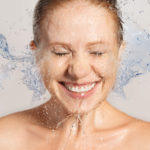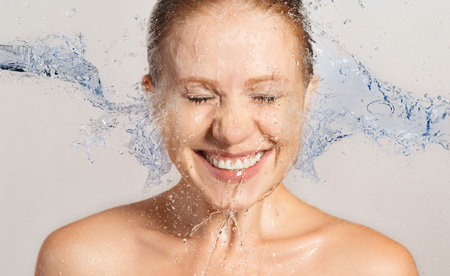We all think we know what it means to have sensitive skin. You notice your skin feels tight, red, stinging, itchy, flushed or hot. Classic signs of sensitive skin right? Wrong. Sensitive skin is inherited. Sensitised skin is acquired. The behaviours of the two conditions are often similar, and treatments may be similar as well, but here’s the crucial difference: if you have truly genetically-inherited sensitive skin, then the sensitivity cannot be fully erased but it can be treated. But here’s the good news! Sensitisation is a response to an external factor and is generally triggered by lifestyle choices…so with a few changes and key product choices, it is possible to kiss goodbye to sensitisation.

So, how will you know it’s sensitisation? The primary signs of sensitisation tend to be; dehydration on the cheek and forehead area, excessive dryness, uneven texture, tightness after washing and stinging on product application, broken capillaries across cheeks and nose, blushing and itching, burning sensations and small, rash-like bumps or breakouts. Sounds brutal I know, but it doesn’t have to be forever.
So, why you? The simplest answer is always “stress”. It never ceases to amaze me how a mental issue can cause havoc with our skin. Sheer physical stress can have an impact too as it’s caused by fatigue, dehydration or malnutrition and or recovery from illness. Its important to be aware too of environmental and lifestyle factors that can contribute greatly to sensitisation, such as; extremes of climate and smoking (which dehydrates the skin by depleting barrier lipids). Sometimes it can even be a result of an overzealous skincare regime. Excessive exfoliation can lead to over-processed skin, excessive washing, especially with alkaline products like conventional soap (just no people), and especially showering/bathing in too-hot water. Remember, your skin prefers gently warm/tepid versus steaming-hot. Over indulging in alcohol and caffeine can also have an impact on your skin in a bad way (grieves for morning Starbucks…)
So where do you even begin to combat all that? The first step in breaking the cycle of sensitisation is removing as many triggers as possible. Lifestyle choices which are under your control are an obvious place to start, such as smoking, alcohol and caffeine consumption. Likewise, stress may be managed to some degree through other lifestyle choices, such as the decision to exercise (rich I know coming from a girl whose gym membership card is gathering dust)
Cleansing the skin properly is the best way to keep sensitization at bay. Look for an extremely gentle, sulfate-free, nonstripping gel or cream cleanser which will fortify the protective barrier function without leaving a residue. Try Dermalogica Ultracalming Cleanser. Make sure you remove your cleanser with a damp cotton or a soft cloth. A spritz of calming spray is a recommended next step. Look for a soothing, hydrating mist to immediately relieve irritation, such as Dermalogica Ultracalming Mist or Thalgo Reviving Marine Mist. Serums can help speed the healing process at times of severe inflammation and ease the discomfort of long-term sensitisation too. I love Thalgo’s Multi-Soothing Concentrate. Your moisturiser is essential to managing sensitisation, since dehydration, excess heat and free radical damage are often triggers. A rich, medium-to-heavy weight product works best, to form a substantial layer of lipid barrier protections. I reach for Dermalogica’s Barrier Repair.
Taking care of sensitisation is a marathon, not a sprint. You’ll notice significant differences by using the right products, but it really demands a lifestyle change and regular professional treatments to really beat and keep sensitisation at bay. There is hope!







